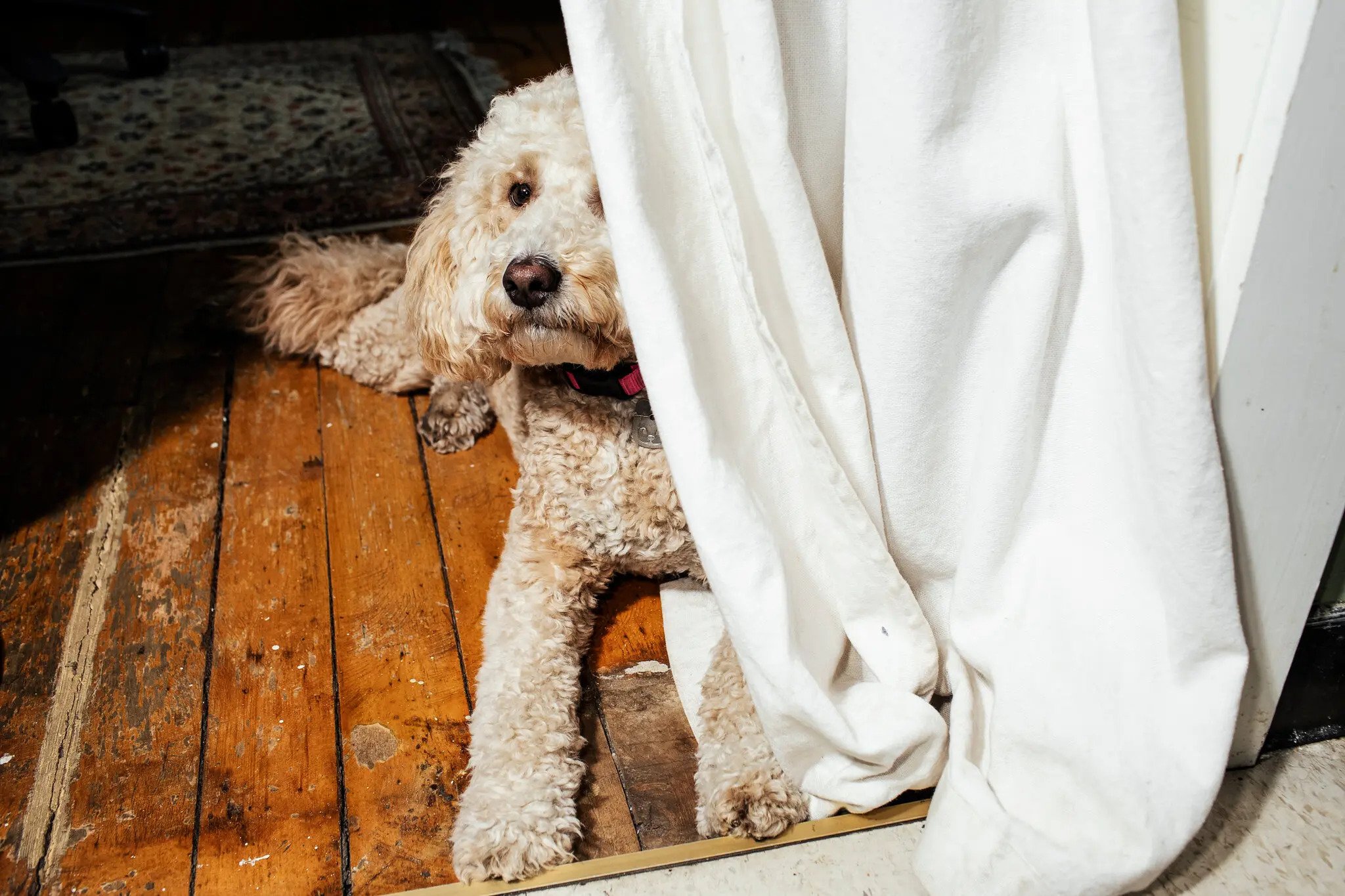Look at those pleading puppy eyes and faces.
Nala, a Goldendoodle, takes comfort in public radio (and her owners’ shoes and socks) when they are away. | Credit: Adrienne Grunwald for The New York Times
How do you explain to your pet why it is so important that you must return back to the office, leaving them alone all day after two years of 24/7 togetherness?
Some people believe that they can't ever go back to an office. And many New Yorkers have long since returned to their workplaces or never stopped going to them. But for those who are now contemplating that transition for their dogs, a day of reckoning has arrived.
More than 23 million American households have added a cat or a dog to their family during this pandemic. 23 million, according to the A.S.P.C.A. These animals have never known what it is like to be left alone all day. They’ve become part of your ZOOM meetings and have found countless other ways to contribute to the interspecies work environment. For many, dogs were the only warm body around them during the pandemic, their pets became their companion, therapist, and entertainment system all rolled into one.
Now, their employers want them to give that up.
“If I go to take out the recycling, the garbage, or go get my mail, he will howl like a Costa Rican monkey, and it will sound like there’s murder going on in my house”
”
Dogs in city apartments have always had to adjust to less than ideal conditions, but the return to work means that suddenly, thousands will undergo the same transition at the same time, said Kate Senisi, the director of training at School for Dogs in Manhattan's East Village. "We've had a lot of separation cases coming through," she said.
Dogs who were used to being left alone before the pandemic tend to adjust relatively quickly. But for the pandemic puppies, dogs born and adopted during the pandemic haven't been left alone much at all, and now they're at a sensitive age where it can be pretty difficult and it would be like teaching them a new skill.
Kate Senisi, the director of training at School for the Dogs in Manhattan’s East Village notes an increase in separation cases coming through the school, referencing pandemic puppies — dogs born and adopted during the pandemic — “they haven’t been left at all, and now they’re at a sensitive age, adolescence,” she said. “It can be pretty difficult. They have to be taught these new skills.”
Pro Tip: Don't give your dog that special toy only when you leave, because that will become a trigger for distress.
Pam Reid, vice president of the A.S.P.C.A's behavioral sciences team, says that dogs who are suddenly left alone may feel "confused, lonely and wondering why everyone is rushing out the door instead of spending time at home." She suggests short practice separations before the big return to the workplace, and scheduling walks and meals to accommodate the future work schedule.
Be sure to look out for signs of anxiety as you prepare to depart, such as nervous pacing and panting, or vocalizing trying to leave with you.
Although, the real separation anxiety may lie with the owners, not the animals. For many people, a lot of these dogs have become emotional support animals. When they leave their dog, a good portion of the anxiety is coming from the owner, not the dog. The pandemic has given everyone a bit of neurosis (and a license to indulge) in those neuroses.
Meet some New York dog parents and what works for them… (click to view captions)
interested in doggy daycare?
check out these highly recommended pawsome caretakers for your furry frenz!














